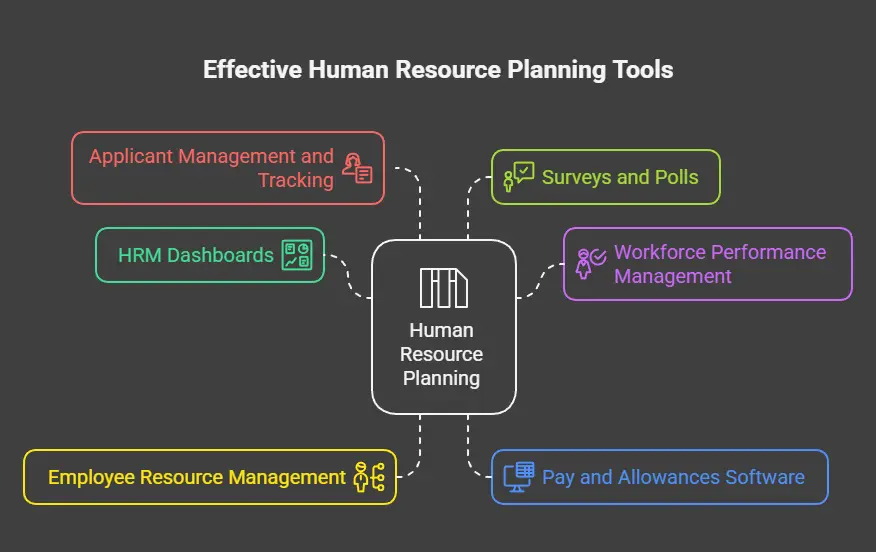The business world is always transforming. However, one aspect that stays the same is the value of individuals. The individuals who work for a company are extremely crucial to its success. You need a plan to get the most out of your employees.
Human resource planning (HRP) helps businesses get ready for the future by figuring out what HR needs the firm might have in the future.
The following post goes into further detail about what HRP is and why it is crucial to your company’s HR strategy. We’ll also provide you with an overview of HRP and show you some tools that are effective to make your HRP procedures better right away.
Ultimate Perspectives and Objectives of Human Resource Planning
What is human resource planning? The HR management plans to improve their workforce and align them with the company’s objectives to achieve the targets through HRP.
The basic purpose of HRP is to keep the right number of employees so that the company can generate the most revenue. One of HRP’s key goals is to make sure that an organization has the right amount and standard of team members to reach its goals.
It implies that HR leaders need to pay attention to more than simply hiring people. They also need to focus on training, retaining individuals, and making the most of the workforce. Numerous individuals are working from home these days in response to globalization and the rise of flexible work arrangements.
In this scenario, HRP lets HR managers use modern tools and procedures for hiring, training, and keeping employees, making sure they can evaluate the whole workforce from anywhere in the world. HRP is also in charge of making sure that the right individuals are strategically assigned to different areas to improve flexibility and adaptation. For this, businesses often turn to specialized providers, such as HR consultancy services in Dubai, to help them navigate these complex tasks.
Improving the Impact of Human Capital: Effective Sources and Tools of Human Resource Planning
As an element of your human resource planning, you should always be accumulating and evaluating data. Listed below are some of the most utilized instruments that might help you plan HRP effectively.

Human Resource Management Dashboards:
Gather and show data on HR parameters, including turnover rates, levels of fulfillment, worker efficiency, level of expertise, and internal promotions to help you plan.
Managing Workforce Performance:
Give folks feedback on how well they are doing and give them performance evaluations over time. It is very important during the stage of HRP integration that HR professionals can see how role adjustments and extra training are being effective.
Employee Resource Management:
Integrate several HR tasks, such as planning, payroll administration, staffing, orientation, recruitment, rate of turnover evaluation, and measuring productivity. These operations are automated to make it easier to change human resource planning and measure workforce performance, which can be further streamlined by partnering with a recruitment consultancy.
Software For Pay and Allowances:
You can readily determine how your current pay and perks compare to industry norms and financial trends. It helps make sure individuals get pay and benefits that are in line with what other companies offer, which lowers turnover, increases happiness, and boosts productivity.
Applicant Management and Tracking:
Easily keep track of and manage your hiring pipeline. An ATS helps you keep track of job advertising, manage candidate applications, and keep a database of potential employees. Thus, making it easier for you to find and hire the best individuals for your company rapidly.
Surveys and Polls:
Find out what people think about certain HR issues.
- How managers feel about the abilities and productivity of their team members
- What kind of training do individuals want
- How happy they are with their perks and pay
- How is the company culture
- How happy employees are.
Use them to find potential for internal promotions or possible vulnerabilities that could cause high turnover or lower productivity.
Primary Steps for a Successful Human Resource Planning
The human resource planning process has four major phases that are rather wide. Execute these steps to reach the final goal of creating a plan that helps the organization discover and retain competent personnel to meet its demands.
Evaluating the Worker Supply:
The starting point of HRP is to find out how many employees the organization already has. At this point, the HR department looks at the organization’s strengths by looking at the number of people, their skills, credentials, jobs, incentives, and performance levels.
Predicting the Demand for Workers:
The second phase is for the corporation to plan out what will happen to its workers in the future. The HR department may consider anything that would affect the business’s prospects, such as employee promotions, retirements, and transfers.
The human resources division can also look at outside factors that affect the demand for personnel, such as new technologies that might maximize or reduce the labor requirement.
Balance between Labor Requirement and Contribution:
The next phase in the HRP process is to predict how many jobs will be required. HR does perform a gap assessment that lists the company’s specific demands to decrease the gap between the amount of labor the company has and the amount it will need in the future.
This examination will typically lead to several queries, such as:
- Should workers acquire knowledge and new skills?
- Does the business require further managers?
- Do all of your employees use their full potential in their current jobs?
Creating and Executing an HR Plan
The responses to the gap assessment inquiries help HR decide what to do next, which is the last step in the HRP process. HR needs to do things that will help their plan work with the rest of the firm. The department requires a budget, the ability to effectively execute the plan, and everyone in the department needs to work together to achieve that.
Great Tips for Major Improvements in Human Resources
Knowing what human resource planning means, what its goals are, how important it is, what problems it might cause, what steps to take, and what tools to use will help you make better decisions and lead your business to more success. Let’s have a look at some amazing strategies for making your employees more productive:
- Set up personalized notifications for your most important KPIs so you can act on shifts before they turn into trends.
- Employ aggregated performance patterns to find skills gaps and make targeted plans for growth.
- Check market standards every three months to stay ahead of inflation and make changes to pay before they occur.
- Utilize scenario planning models to guess how changes in pay would affect keeping employees and the budget.
- Tag individuals with important talents or traits so you can immediately get in touch with them again when new jobs open up.
- Plan pulse surveys every three months to keep an eye on changes in condition and deal with problems before they get worse.
Conclusion
The best thing a firm can have is competent staff. Human resource planning is the process of coming up with plans to make sure that a business has sufficient staff members to meet its demands and doesn’t have a lack of labor or employee surplus. An efficient HRP plan can help a business be lucrative and productive, and this can be achieved through various methods, including HR outsourcing.




